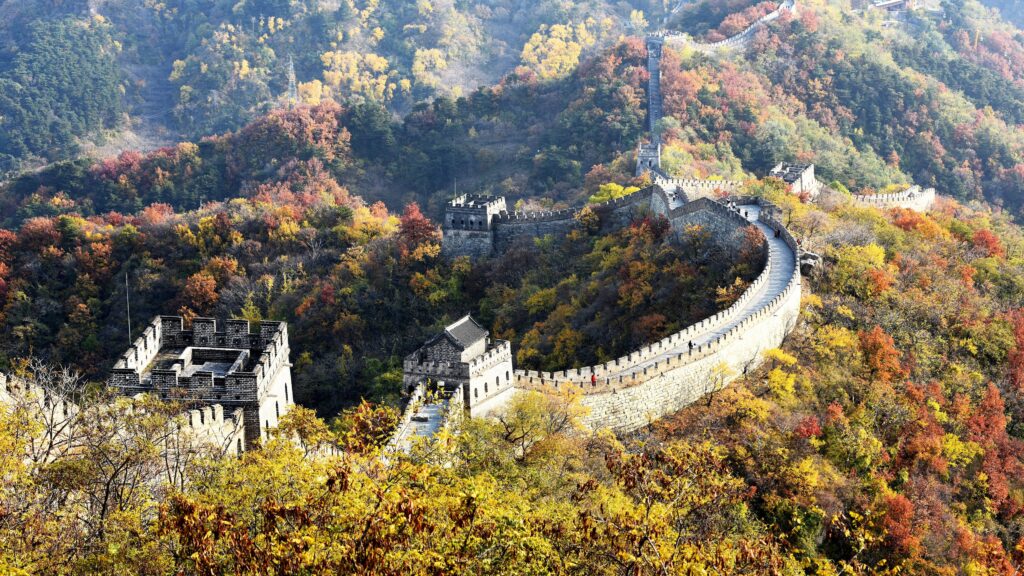
Beijing, capital of China, is a 3,000-year-old city with 860 years as imperial capital and the first “Dual Olympic City” (2008 Summer & 2022 Winter Games). Blending ancient heritage with modernity, it offers immersive Chinese cultural experiences.
Top Attractions & Tips:
Tian’anmen Square, the heart of Beijing, is the world’s largest city center square. Stretching 880m north-south and 500m east-west, it spans 440,000m² and can hold 1 million people.
Central features include the Monument to the People’s Heroes and Chairman Mao Memorial Hall. Surrounding landmarks: west—Great Hall of the People; south—14th-century Zhengyangmen Gate and Arrow Tower; flanks—Labor People’s Cultural Palace and Zhongshan Park.
Symmetrical and majestic, it remains a iconic Beijing landmark.

The Forbidden City, also known as the Imperial Palace of the Ming and Qing dynasties, is located at the heart of Beijing’s central axis. Covering 720,000 square meters, it comprises over 70 palaces and 9,000 rooms. Construction began in 1406 (the fourth year of Emperor Yongle’s reign) and was completed in 1420, with a history spanning nearly 600 years.
Temple of Heaven : this 2.73 million m² complex was built as an imperial sacrificial site starting in 1420 (Ming Yongle 18th year), completed under Qing Qianlong.
Key structures: Hall of Prayer for Good Harvests, Circular Mound Altar, Imperial Vault of Heaven.Served exclusively as emperor’s Heaven-worship site for 490 years (1420-1911). Converted to park in 1918.
Inner precinct splits into north (Prayer Altar) and south (Circular Mound), linked by 360m Danbi Bridge (main axis).South end: Circular Mound & Vault; north end: Prayer Hall & Imperial Supremacy Hall. East: ritual auxiliaries (slaughter pavilion, kitchens); west: Hall of Abstinence (pre-ceremony fasting).
Outer precinct: wooded area with Temple of Music (ritual music training).

The Summer Palace (Yiheyuan) is China’s largest and best-preserved imperial garden, one of the Four Great Gardens (along with Chengde Mountain Resort, Suzhou Humble Administrator’s Garden, and Suzhou Lingering Garden).
Built around Kunming Lake and Longevity Hill, it blends Hangzhou West Lake’s scenery with Jiangnan garden techniques, forming a vast natural landscape. As the most intact imperial palace garden, it’s dubbed the “Imperial Garden Museum.”

The Great Wall of Beijing, an integral part of China’s Great Wall, is primarily located in the northern mountainous areas of Beijing, including Yanqing, Huairou, and Miyun districts. Stretching nearly 600 kilometers, its construction dates back to the Spring and Autumn and Warring States periods, with subsequent expansions and renovations during the Qin, Han, and Ming dynasties. The existing sections mainly date to the Ming Dynasty.
Notable segments include Badaling, Mutianyu, Juyongguan, and Simatai. Badaling, renowned for its grandeur, represents the quintessence of the Ming Great Wall and was inscribed on UNESCO’s World Heritage List in 1987. Mutianyu is distinguished by its lush vegetation, dense watchtowers, and panoramic views, especially picturesque during autumn with red foliage. Juyongguan, strategically significant since ancient times, features magnificent fortifications and exquisite stone carvings. Simatai is famed for its steepness, density, uniqueness, ingenuity, and completeness, with the “Wangjing Tower” and single-side wall design standing out as architectural marvels.